Fender’s ’57 Champ: Do you really need more than five watts?
The Fender Champ may be an unassuming little amplifier, but you’ve probably heard it more often than you’re aware of. Famously used on the Derek and the Dominoes album by guitarists Eric Clapton and Duane Allman, the amp has since (and before) been spotted in various rigs and studio setups, and can be heard on countless recordings.
Searching for tone
When I started playing guitar, I wanted to have the Marshall stacks my favourite players had lined up on their stages. I thought that was normal, to play guitar through a 100 Watt stack. After I got my first tube amp, a 15 Watt Blues Junior, I realised that maybe 100 Watts could be more than I need. When I would play the amp at home, I had no idea how loud I really was until my flatmate let me know he could hear me down the street at the bus stop.
Of course, I upgraded to a 4×10 ’59 Bassman reissue. This amp has no master volume. You can imagine how much fun that was for my neighbours, who once kindly asked me if I wouldn’t mind facing the amp in the opposite direction. There were a few moments where I dimed the amp, and got this glorious, drenched, organ-like tone from my 62 RI Stratocaster, but at that volume, it was pretty unusable. Even with a band.
Being practical
I was still looking at Marshalls, but I think by this time I’d realised that a 4×12 and a separate head is maybe a bit less than practical for someone like me. Without a car, it would be impossible to transport. I could lug the Blues Junior, and even the Bassman, on to a bus stop or train station, but there’s no way a Marshall head and cab can be carried by a diminutive guy like me. And even if I could find room in our little terraced house, the thing would move so much air (at any reasonable volume) that it would be deafening.
Also, around this time, venues and guitarists were moving on to cleaner, more efficient and manageable digital alternatives, and I was very sad to see these behemoths being relegated to the past.
Big things, small packages
On the other end of the spectrum, lay the smaller amps. Neil Young, Eric Clapton, Duane Allman, Joe Walsh, Billy Gibbons, even Jimmy Page, someone who’s synonymous with rows of Marshall stacks, could coax some gnarly sounds out of smaller amps that were pushed to their limits. One amp that constantly popped up was the little Champ, that seemed to be many studios’ and musicians’ secret weapon. This little 5 Watt amp had a single 8″ speaker and one solitary volume control. That’s it. The trick is to turn the knob all the way to its breaking point, that’s where the magic happens. The amp becomes very responsive and sounds magnificent.
The Champ returns
Reissue Champs are usually based on the 5F1 circuits. The simple design has a 12AX7 preamp tube, a 6V6 power tube, 5Y3 tube rectifier, and an 8″ speaker. Since I’d given up on my dreams of owning a stack (and playing them in arenas), I’d turned my attention to this opposite extreme of an amp.
What was annoying to me was the realisation that this simple design, more than half a century old, is not cheap! Thanks famous rock guitarists! Fender’s Champ reissues cost more than my ’59 Bassman reissue. Yes, one could argue that the Champs were hand-wired, but it was still a lot of money, at least in my opinion.
Anyway, I did what most other people looking for a piece of gear that has taken over them like an obsession would do, scour the internet. All forms of eBay, Reverb, and local classifieds were searched.
Fortunately, I found someone locally who was getting rid of their Vibro Champ, a similar amp with an added tremolo control. The combo had a switch that lowered its 5 Watts down to an even more manageable less-than-5-watts. Suffice it to say, the amp sounded great, and came home with me.
Alternatives
However, Fender isn’t your only option with these amps. Time has allowed aficionados and electronic-wizards to dissect and analyse these legendary amps, and make detailed kits and replicas available. With these non-Fender options, you can choose from budget DIY kits, to high-end, boutique versions.
If you’re in Europe, the guys at Tube Amp Doctor (TAD) make some fantastic stuff. They have kits and parts for several classic amps, and for an up-charge, will even put together an amp of your choice.
Life after Champ
I’ve since gotten a Marshall JCM 800 (the 20 Watt studio versions that were released not too long ago), but the Champ gets played the most. In fact, the Marshall is gathering dust these days. The Marshall, with its 2×12 cab, is still too loud on its 5 Watt setting. The Champ can also still be pretty loud for a living room on its low-output setting, and I use a pedal for dirt when I can’t crank the amp. But I do love its simplicity. There’s no faffing about with the controls, you just set your volume and off you go.
It’s also encouraged me to seek out simpler gear. Since it doesn’t have reverb, and cranked can sound boxey, I thought I’d get a reverb pedal that could add some dimension to the tone. I ended up with the J. Rockett Boing*, a simple one-knob reverb pedal, that’s supposed to emulate a spring reverb. You turn the control clockwise for more reverb, and the other way for less reverb. Simple. And it sounds fine too.
To Tweed or not?
Given the plethora of digital alternatives available today, one could theoretically replicate the features and tones of this little combo. But there’s something to be said about the smile it puts on my face when I look at it sitting politely in its tweed. A Kemper or an Axe FX unit just doesn’t have the same effect on me. Maybe if someone wraps them up in tweed…?
Since then, I’ve also discovered Kieth Williams of Five Watt World, who I find to be a kindred spirit, and someone who also enjoys the more uncomplicated pieces of equipment. If you haven’t already, I highly recommend his YouTube channel.
You can hear Kieth discuss the Champ in the video below. And if you want to get one for yourself, just follow the links I’ve added.
More Information
You are currently viewing a placeholder content from YouTube. To access the actual content, click the button below. Please note that doing so will share data with third-party providers.
*Affilate link
3 responses to “Fender’s ’57 Champ: Do you really need more than five watts?”
 5,0 / 5,0 |
5,0 / 5,0 | 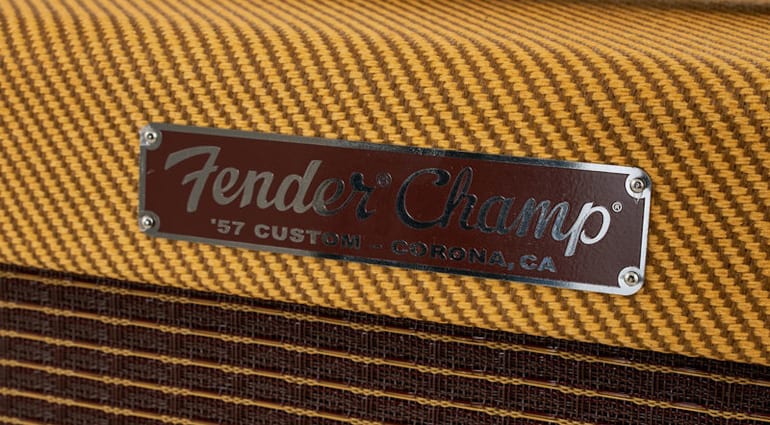

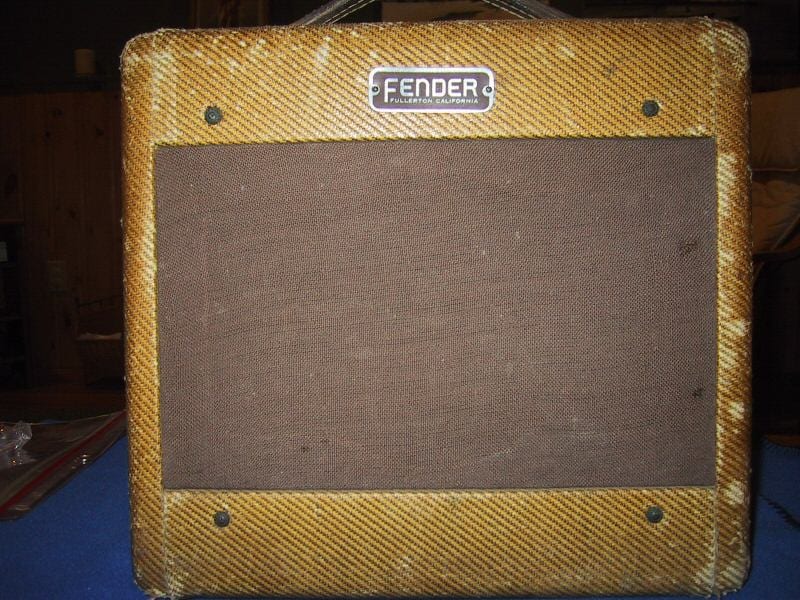
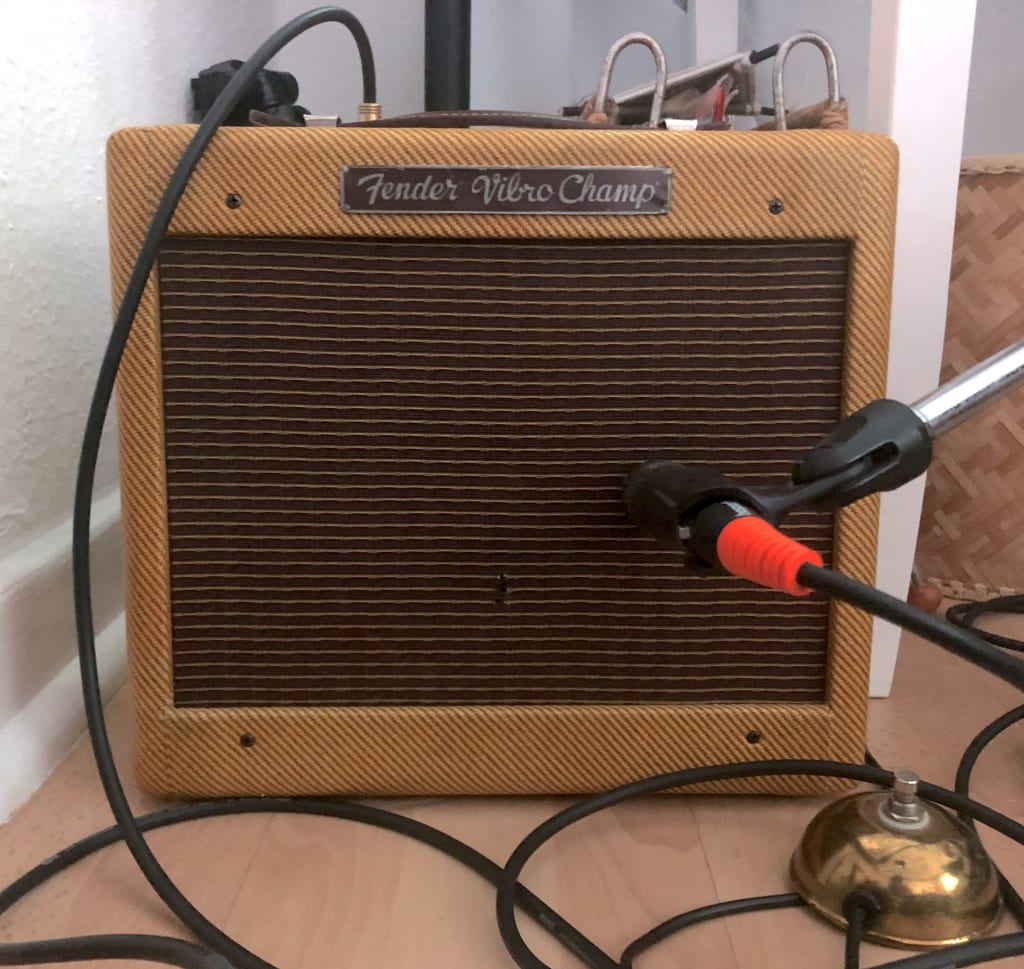
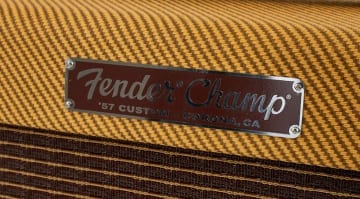

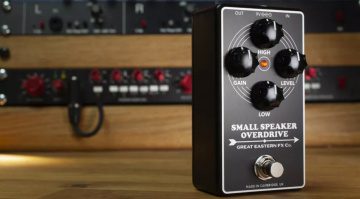
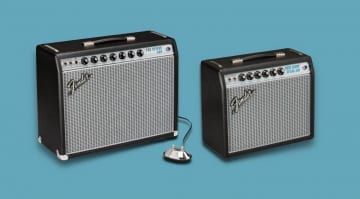
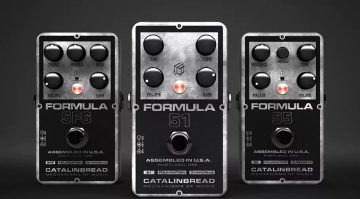
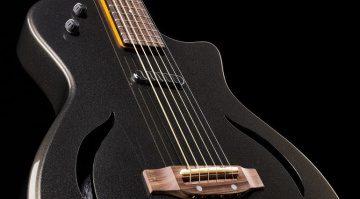

Telecaster-Turnip Greens-5f1
Simple works, I needed the overdrive because at 5 Watts the 5F1 is too loud to get knarly with in the house with out a dirt pedal. I would love to see the schematic for the low power mod. Is it is a coil tap on the output transformer?
I am absolutely no expert, but if you want to turn it down, you have a couple of ways you can go. First is to buy a London Power kit which will allow you to vary the output power. You will have to be handy with electronics to do this. You can also have a shop do it for you. This will not be cheap.
Another way (and this is off the top of my head) would be to replace the transformer used in the power supply to a lower voltage output. This will run the plates of your tubes at a lower voltage and will reduce output, but it will also change the bias on your cathodes, so you will need to change out the resistors. This is probably cheaper than the London power alternative, but does not have the versatility.
Now, what I am going to try is very ambitious, and I don’t know if it will work. I am going to build a Champ ‘clone’ that I call the verSETile Amp. It will use two variacs so I can vary the plate voltage on both the preamp and power amp section and then pots so I can change the bias. I will have yet another pot so I can change the feedback. Of course, that is no longer a simple amp.
Are there kits to modify champ 600 to 5f1 champ where to purchase